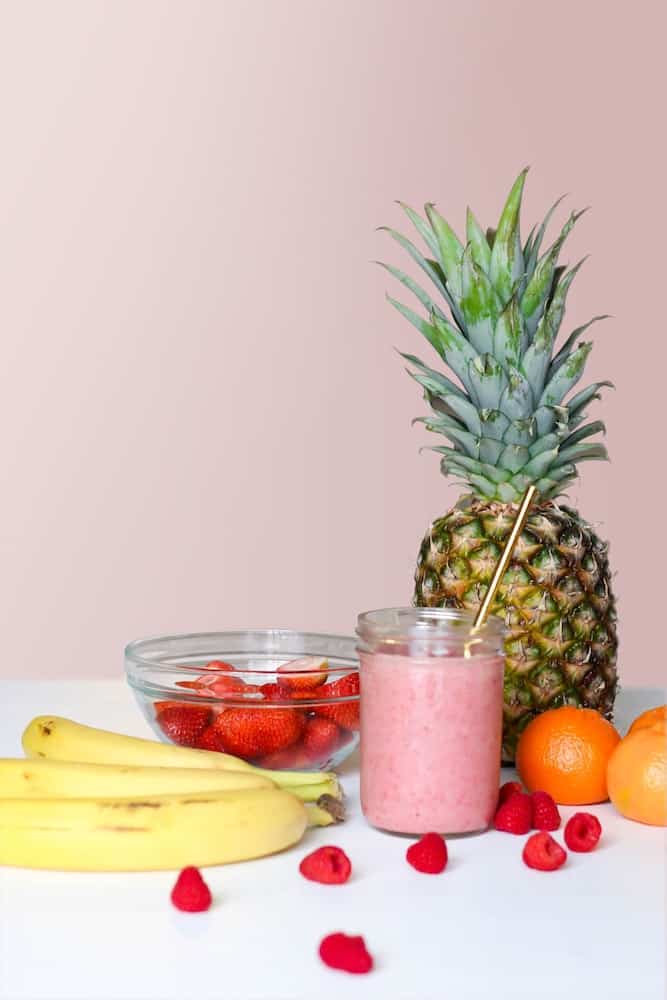The struggles of being a 20-something living with my hippie vegan parents: at the beginning of the pandemic, my parents panic-bought a whole lot of nutritional yeast, beans (dried and canned), rice, and cacao powder.
Cool.
So now we have too much cacao powder in our house, which made me wonder: what is the difference between cocoa powder and cacao powder anyway? Can they be used in place of one another in recipes?
Let’s find out!
Origins: Where Does Chocolate Come From?

Both types of powder start out from the seeds of the cacao tree, which is native to South America and western Africa. These seeds come inside the fruit of the tree and are surrounded by thick pulp. .
First, the beans are removed from the fruit and left in bins for a few days. Microbes from the fruit start to ferment the beans and develop their chocolate flavor.
Next, the beans are dried, sorted, and roasted at a high temperature. Just like coffee, roasting cacao beans gives them a richer flavor.
After roasting, the beans are crushed and removed from their shells, and then processed further. This creates a liquor that can then go on to become chocolate and other chocolatey products.
So when do cacao and cocoa powder get made in this process?
Cacao Powder
Cacao powder is made after the beans ferment, but before they get roasted. These unroasted beans get processed and milled at low temperatures, creating a powder that retains the nutritional benefits of the cacao bean (a number of good-for-you antioxidants and minerals, such as calcium, magnesium and iron).
Because of these nutritional benefits, cacao powder is often marketed as vegan or as a health food, as it’s a minimally processed product and usually doesn’t have any additives or preservatives.
In terms of taste, cacao powder has a chocolatey taste that is stronger and more bitter than cocoa powder.
Cocoa Powder

Cocoa powder is made at the final step of processing. The liquor is run through hydraulic presses, which removes about half of the fatty cocoa butter out, leaving dry solids. It’s then pulverized into powder and ready to sell.
Dutch processed cocoa powder adds baking soda before pulverization in order to alkalize the final product. This reduces acidity and bitterness, and makes the cocoa powder more water-soluble.
The process of roasting cacao beans at high temperatures makes them taste great, but unfortunately, it also destroys a lot of the nutritional value.
Some cocoa powder can also contain added sugar or dairy, so be sure to check the ingredients if you’re vegan or allergic to dairy!
Are Cacao and Cocoa Powder Interchangeable?
Cacao and cocoa powder aren’t generally interchangeable. They have different flavor profiles, and you’ll be better off sticking to whichever your recipe calls for.
In general, cocoa powder is commonly seen in recipes for chocolatey desserts: cakes, brownies, cookies, that sort of thing. You can also make hot chocolate out of it.

Cacao powder is a popular addition to healthy foods like smoothies, chia puddings, and oatmeals. Some raw desserts also call for cacao. Since baking cacao can decrease its nutritional value, it’s best to eat it raw and uncooked.
If you only have one type of powder and feel the need to use it in place of the other, here’s some things to keep in mind.
Cacao powder tastes stronger and more bitter. You may want to use less of it in place of cocoa powder.
Cocoa powder isn’t as water soluble as cacao powder (with the exception being Dutch-processed cocoa). You may have to add or subtract liquid to achieve the right texture.
You may also have to adjust the amount of leavening agent used. Cacao powder is more acidic than cocoa powder – especially Dutch processed, which is made to be more alkaline. Thus, cacao powder will react more to baking soda, and you’ll need to use less of it.
While there’s no shame in playing around and experimenting if you want, overall, it’s probably more trouble than it’s worth to try and substitute these two products. They’re pretty different, despite coming from the same origins. And if you substitute one-for-one, your baked goods might not taste right or have the correct texture.
Happy baking!

Leave a Reply
You must be logged in to post a comment.